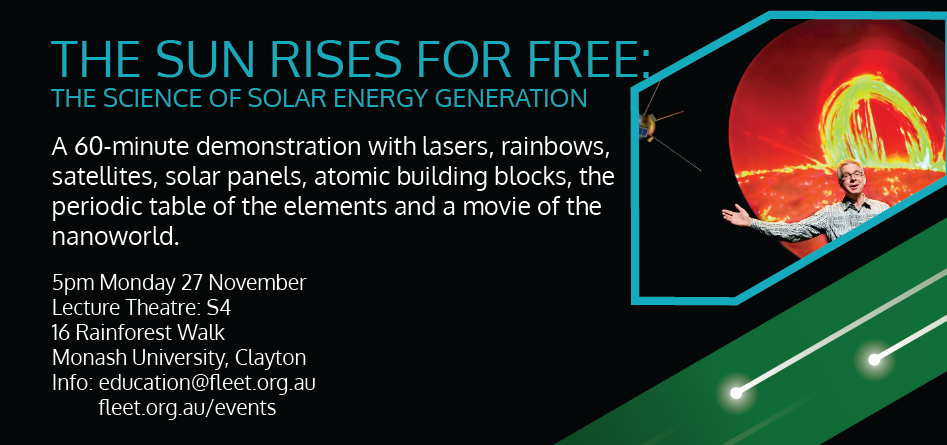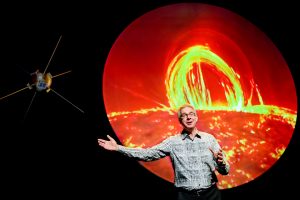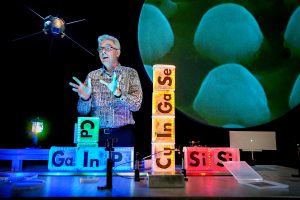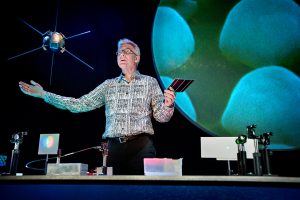-
27 Nov 2017
5:00 pm - 6:00 pm
The Sun Rises for Free: the science of solar energy generation
A 60-minute demonstration with lasers, rainbows, satellites, solar panels, atomic building blocks, the periodic table of the elements and a movie of the nanoworld.
Download flyer here.
The energy from sunlight that radiates onto earth is so intense that it can provide all the energy we need to power our entire planet. In fact, one hour of sunlight incident on the earth’s surface is sufficient to supply the entire human population with the energy it consumes in a full year. And sunlight comes for free, every day! What do we need to do to use this enormous source of energy so create a fully renewable and sustainable energy supply for our society?
Professor Albert Polman, a specialist in solar energy research at the University of Amsterdam, the Netherlands, will give a lecture aimed at a general, non-specialized audience, on the science of solar energy generation. He will provide a historical overview of inventions that have created the solar panels that we have today. He will then explain what is needed to lower the cost and increase the efficiency of solar technology so that it becomes so cheap that it will beat existing energy technologies (coal, gas, nuclear power).
In this free lecture, professor Polman will give live demonstrations using lasers, light spectra, and atomic building blocks to explain how scientist all over the world are working hard today to reach the dream of a society that is fully powered by the sun.
About the Presenter:
Albert Polman is professor of Photonic Materials for Photovoltaics at the University of Amsterdam, the Netherlands. He is one of the pioneers of research on “nanophotovoltaics”, the study of light at very small length scales to realize solar panel cells with ultra-high efficiency that can be made at low costs. Polman has won many international awards for his research and is member of the Royal Netherlands Academy of Arts and Sciences. He is visiting Australia on a Frew Fellowship award to him by the Australian Academy of Sciences.
Venue: S4 Science Lecture Theatre
Address:




